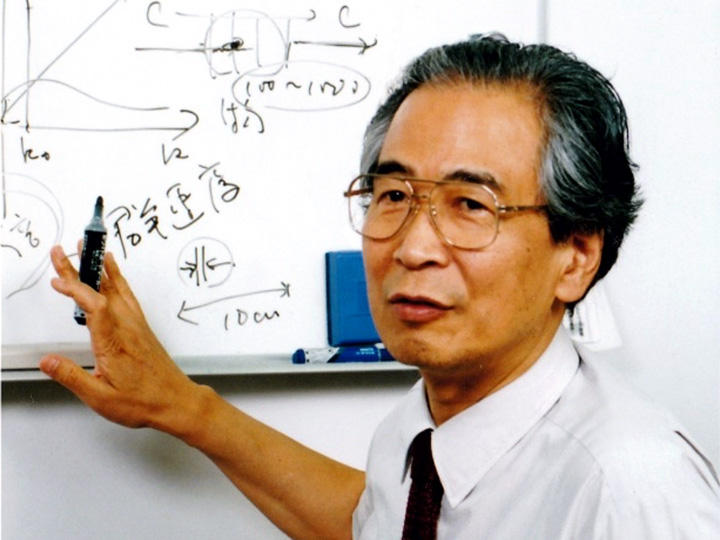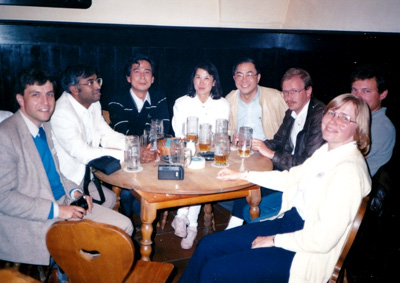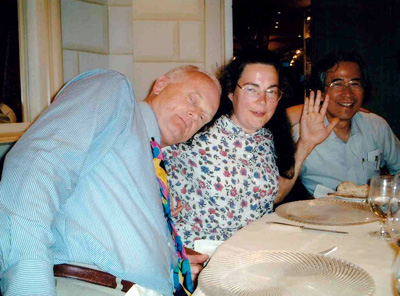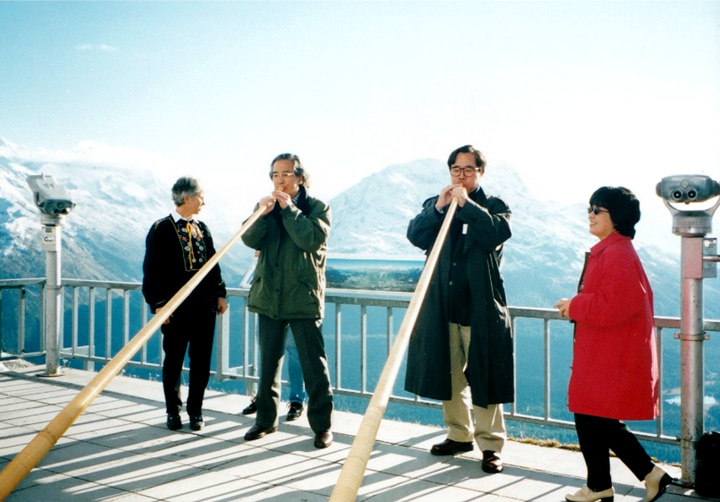- Home
- > Outreach
- > Publications
- > CONVERGENCE
- > LEADER’S VOICE
 LEADER’S VOICE
LEADER’S VOICE
A Conversation with Prof. Yoshinobu Aoyagi
Fusion of Different Fields or Specialties Stimulates New Ideas

Yoshinobu Aoyagi
Emeritus Prof. Tokyo Institute of Technology, Emeritus Prof. RIKEN Institute
Basic research is critical in developing the next generation of science and technology
The fact that Japanese scientists have won several Nobel Prizes in recent years should be regarded as the fruit of basic research over the years. For example, the development of the blue LED, which won Dr. Isamu Akasaki the Nobel Prize for Physics in 2014, is based on the grassroots-style basic research conducted around 1979 on the metal organic chemical vapor deposition on the blue light-emitting material, gallium nitride (GaN).
Even though GaN is durable and emits light well, this study presented several challenges, such as the unavailability of a suitable substrate on which to grow the crystals. Therefore, high-quality crystals could not be grown, and the n-type and p-type GaN necessary for diodes could not be created. In the meantime, zinc selenide (ZnSe) was studied as a promising material for a blue light-emitting compound in the 1990s, but it gradually became apparent that its life is too short for practical use. Under such circumstances, Dr. Akasaki persevered and continued his research until its fruition, hoping that developing a blue LED made of GaN with a long life expectancy “would trigger a lighting revolution not seen since the time of Thomas Edison.” This grassroots-style basic research is critically important as seed research that may produce great fruit in the future. Without a bud, new fruit will never grow. In curiosity-driven grassroots-style basic research, it is critical to pursue one’s strong scientific and technological interests. If you dig deeper, it is possible that an unexpected result will emerge, and a new field of study will be born. It is important in grassroots-style basic research to pause for a moment prior to starting to understand the vision clearly; “What kind of wonderful world will be uncovered if this research works, and what are its challenges?” One’s research may often reveal unexpected phenomena or results. After analyzing these phenomena and results, one will need the ability and deep insight to determine accurately whether they are worthless, or if you are on to something. A clear vision is necessary in order to do so.
The scientific and technological nation Japan should strive to be
Not interesting if the research is not ambitious

Together with renowned researchers from around the world at the banquet of the international symposium in Ringberg, Germany.
It is also important to have a broad view and to discuss in depth with professionals from various fields in order to find an interesting topic of research. I have several “strategic” researcher friends in various disciplines around the world, and through discussion, I have learned the perspectives of professionals in different disciplines and their worlds.
Fusion of different fields or specialties to discover fascinating research topics

Dinner with Professor M. Stuke of Max Planck Institute, Germany.
The advantage of fusion of different fields or specialties is that it is easy to propose novel and interesting research topics. The Atom Switch device, an example of success at the International Center for Materials Nanoarchitectonics (MANA), is a wonderful fruit of interdisciplinary collaboration among professionals in the basic research of STM and electronics. When you look for a new “fusion” research topic jointly with researchers in other disciplines, ambitious and interesting research will be born. When a young researcher joins a new lab, he/she can formulate a fascinating research topic for him/herself as well as for the lab if the varied expertise of the researcher and the lab can be fused. Learn the equipment, people, and research topics of the new lab, and then propose an interdisciplinary theme in collaboration with your own research.
Mindset of facing obstacles
It is also essential to have someone who encourages you and gives you advice in finding yourself in a new field. There is a saying to “make use of whoever is useful, including your parents.” What matters is the result. I believe that the experienced professionals who have helped build this science-and-technology-orientated nation with their wisdom and technology can assume the role of the parents.
■■■

At the International Nanotechnology Conference in Pontresina, Switzerland.
Professor Yoshinobu Aoyagi (second from left) and the first MANA Director Professor Masakazu Aono (second from right).
Yoshinobu Aoyagi
Emeritus Prof. Tokyo Institute of Technology,
Emeritus Prof. RIKEN Institute,
Senior Researcher of Ritsumeikan Univ.
Awards:
Ohkohchi Memorial Prize,
Ichimura Science Special Prize,
National Invention Award,
Jpn. Applied Physics Prize,
Prize of Agency of Science and Technology,
MNC Most Impressive Presentation Award,
Best paper award of Jpn J. Appl. Phys.,
Fellow of Jpn. Society of Appl. Phys.,
Micro and Nano Processes International Conference Award.

